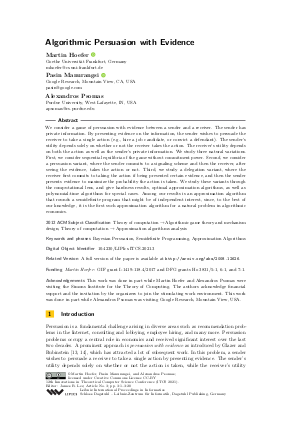LIPIcs.ITCS.2021.3.pdf
- Filesize: 0.59 MB
- 20 pages

 Creative Commons Attribution 3.0 Unported license
Creative Commons Attribution 3.0 Unported license



























Feedback for Dagstuhl Publishing